Report from the congress 2010
A scientific congress The youth sport 2010 was held at the Faculty of sport in Ljubljana between December 2nd and 4th 2010. The patron of the symposium was the President of the Republic of Slovenia Mr. Danilo Türk. The title topics of the symposium were:
- Youth lifestyles and sport: health promotion through sports and PE, leisure sports, fitness (and fatness) of children and youth, the role of media, sports facilities, playgrounds.
- Trends in PE teaching: teacher training, dealing with motivation and behavioural problems in PE, PE and sport for children with disabilities, classroom management, curriculum. development, teaching methods, PE in the educational systems, the pedagogies in PE, planning, evaluation and assessment of PE, involvement of parents in PE and youth sports.
- Coaching, training and testing of young sportspeople: working with sports talented children, sports, ethics and fair play, psychological aspects of youth sports.
- Medical aspects of youth sport: injuries in PE and youth sports, nutrition of young sportspeople, obesity, diabetes and sports, asthma and sport, excuses from PE, cooperation between PE teachers and physicians.
- Anomalisms in youth sports: sports bets, frauds, PE, youth sports and social exclusion, adaptations of rules, doping, overtraining.
- Statistics and analyses in PE and youth sports.
- The congress showed that there is an urgent need to make a qualitative step forward in physical education and youth sport at large. Our environment has changed and it is professionally unacceptable to ignore the changes and proceed with the old practices which do not work in the new environment.
The goal of physical education should be to develop physically educated students but this goal can only be achieved by changing our learning environment, opening doors to information and communication technology and by making use of the modern diagnostic technology in research of PE and youth sport.
This, however, does not mean that we have to abandon the concepts of PE we know but that we have to change it, or to merely to start implementing the already accepted criteria of quality and efficient PE and youth sport:
- to provide at least moderate-intensity sporting physical activities of at least 60 to 90 per day to all children and youth
- to include vigorous and very vigorous activities at least 3 times a week, including activities that strengthen muscles and bones
- more emphasis should be put on aerobic activities, which should make up the majority of daily physical activity, and outdoor resources should be used as often as possible to complement the quality work in sport gyms
- PE should not be considered as tool for reduction of obesity epidemics but should function as an important part of wider public effort to deal with one of the greatest present and future health-threat
- PE teacher education institution should produce competent specialist who are able to educate physically literate persons
- quality PE and competent PE teaching should be provided to children from the first years of schooling in the form of joint teaching of PE specialist teachers and generalist classroom teachers and also the preschool children should have the opportunity to develop fundamental movement patterns
- PE curriculums should be balanced and should equally focus on physical fitness and health issues
- social inequalities in youth sport should not be reflected on the children’s physical and motor development and the appropriate measures from responsible authorities should be introduced to make physical activities available to all
- top sport could be used to attract children into organised sport programmes and leisure sporting activities but active participation instead of top result should be the goal of youth sport
- extra care should be taken for children with disabilities to include them as an physically active part of society on recreational and competitive level
- since children can cope with fatigue different than adults this should be acknowledged and children and youth physical activity should include also high-intensity intermittent activities to improve their aerobic and anaerobic fitness
- at the end school should provide children with information about the exercises for good posture, which could be implemented during school breaks and adapted furniture should be introduced in schools to provide a long-term solution.
| Book of Abstracts |
| Proceedings |







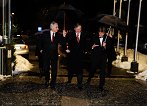

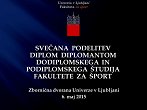


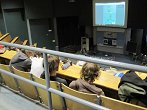



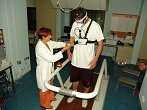


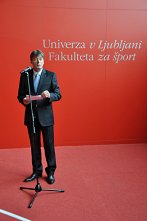

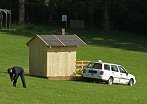



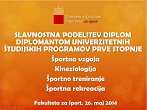
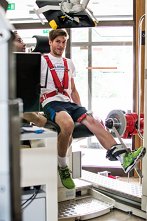







.png)